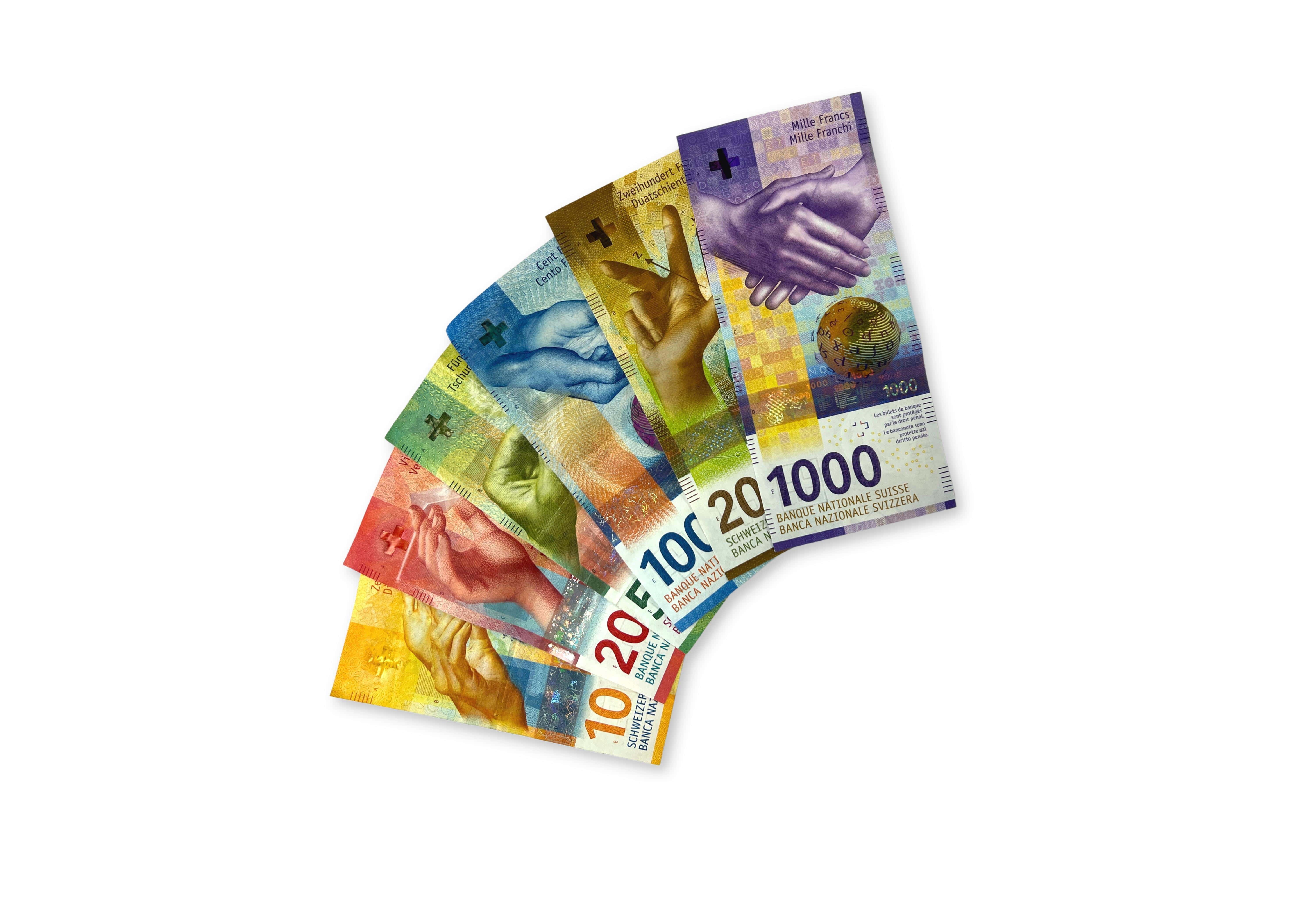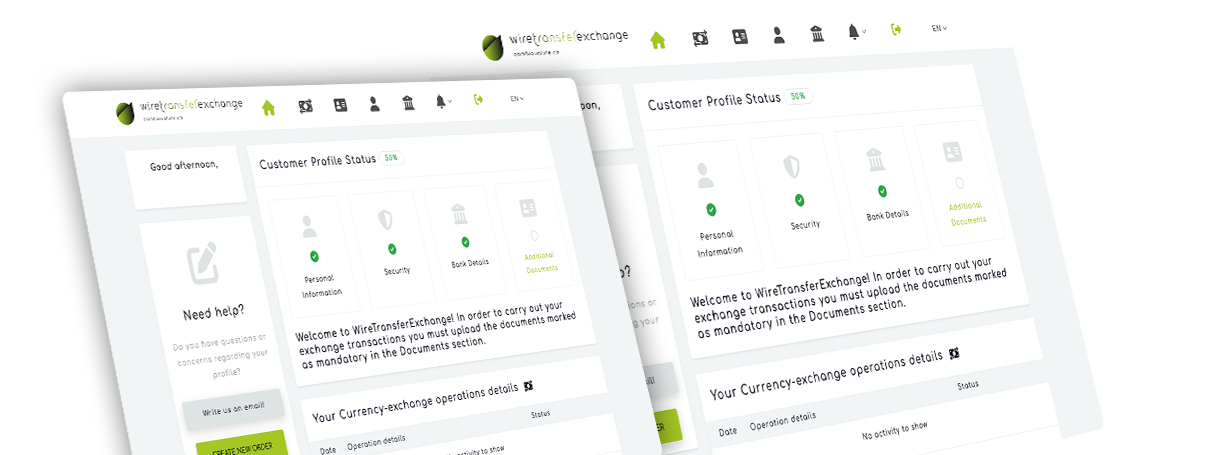The Swiss Franc and how it works
The Swiss Franc (CHF) has been a currency in circulation since 7 May 1850. In addition to being the official currency of the Swiss Confederation, it is also used in the Italian enclave of Campione d'Italia, in the German municipality of Büsingen am Hochrhein and in the Principality of Liechtenstein.
- The Swiss franc, coins and banknotes
- Quotation of the franc against major foreign currencies
- Reference interest rate of the Swiss national bank
- The SARON rate: what it is and how much it corresponds to

The Swiss franc, coins and banknotes
A franc consists of 100 centimes. Coins have values of 5, 10, 20, 50 centimes and 1, 2 and 5 francs. The 1-cent franc coins have been out of circulation since 2007, while the 2-cent coins have not been used since 1978. Centimes are also referred to in the four national languages of the Swiss Confederation as Rappen (or Rp., in German), centime (French), centesimo (Italian) and rap (Romansh).
As of 2017, the Swiss National Bank has issued its ninth series of banknotes, each associated with a specific theme. The denominations are 10, 20, 50, 100, 200 and 1000 francs.

The CHF symbol for the Swiss franc was determined by the international standard ISO 4217, which associates three-letter codes with the names of currencies (the national code followed by the initial of the currency name). These rules were established by the International Organisation for Standardisation (ISO). However, the franc is still sometimes referred to by the abbreviations Fr., SFr., S₣, and Fr.sv., especially outside the banking sector.
The Swiss Franc has an excellent reputation in the market. Due to its general stability, it is considered a safe haven asset and is often purchased during periods of financial uncertainty.
currency_CHF_art quotation against major foreign currencies
| CHF | EUR | USD | GBP | JPY | CAD | AUD | |
|---|---|---|---|---|---|---|---|
| CHF | 1 | 1.0329 | 1.0964 | 0.8844 | 169.4081 | 1.5099 | 1.7088 |
| EUR | 0.9606 | 1 | 1.0571 | 0.8523 | 164.4610 | 1.4659 | 1.6590 |
| USD | 0.9020 | 0.9364 | 1 | 0.8013 | 154.5920 | 1.3778 | 1.5613 |
| GBP | 1.1212 | 1.1631 | 1.2362 | 1 | 192.1578 | 1.7128 | 1.9390 |
| JPY | 0.0059 | 0.0061 | 0.0065 | 0.0052 | 1 | 0.0089 | 0.0101 |
| CAD | 0.6623 | 0.6822 | 0.7260 | 0.5839 | 112.1957 | 1 | 1.1317 |
| AUD | 0.5852 | 0.6028 | 0.6397 | 0.5157 | 99.1364 | 0.8836 | 1 |

Swiss National Bank reference interest rate
What is the reference interest rate of the Swiss National Bank and what is it used for?
The Swiss National Bank uses the BNS policy rate as a tool to implement monetary policy. The Swiss National Bank operates under the Swiss Federal Constitution and the Swiss National Bank Act. Its mandate includes the task of setting monetary policy in order to preserve the value of the currency and ensure the adequate development of the Swiss economy. The National Bank's monetary policy strategy describes how the Bank intends to fulfill its legal mandate of ensuring price stability. Monetary policy is implemented through various tools such as remuneration of sight deposits, open market operations aimed at regulating liquidity in the money market, and, if necessary, interventions in the foreign exchange market.
The monetary policy toolkit is the set of operations that the National Bank uses to implement its monetary policy. The operations that it can carry out on the financial market are established by Article 9 of the Swiss National Bank Act (LBN). The National Bank distinguishes between open market operations and operations at the initiative of counterparties. In the first case, it is the National Bank itself that activates the transaction, while in the second case it simply establishes the conditions under which counterparties can obtain liquidity. Among the normal open market operations are spot against forward transactions and SNB bill issuances.
The National Bank aims to keep short-term rates on secured loans in Swiss francs close to the BNS policy rate. Among these, the most significant is SARON (Swiss Average Rate Overnight). The National Bank influences money market rates by setting the interest rate conditions applied to sight deposits and regulating liquidity in the money market through operations aimed at providing or withdrawing liquidity. The choice of the type of operation depends on the needs of monetary policy and the liquidity situation in the banking system. In fulfilling its monetary policy tasks, the National Bank can also buy or sell foreign currencies against Swiss francs on financial markets.
Below you can find the SNB's reference interest rate, with an indication of when it was last updated.
| Reference institution |
|---|
| Swiss national bank |
| Headquarter |
| Official offices in Berne and Zurich, Switzerland |
| Reference interest rate |
| 1.500 % |
| Last updated |
| 03-21-2024 |
The SARON rate: what is it and how much does it correspond to?
SARON (Swiss Average Rate Overnight) is an overnight rate that is secured and based on the most liquid segment of the Swiss franc money market. It is calculated using both concluded transactions and tradable prices (quotes) on the interbank repo market. In recent years, SARON has become increasingly important in Switzerland as a benchmark rate for financial products and is currently the most representative of the secured short-term money market rates. It is used as the reference rate for financial products such as money market mortgages and floating-rate notes.
Below you will find the latest updated value of the SARON rate:
| SARON | 1.450 % |
Need to change your money and want to take advantage of our extremely advantageous exchange rates? Sign in by clicking on the button below.
CHANGE NOW AND FIND OUT HOW CONVENIENT IT IS !Why choose Wiretransferexchange.com?
With Wiretransferexchange.com you change your money, salary or savings from the comfort of home and save up to 80% compared to the average rates of traditional banks and exchanges. Find out why it makes sense to change with us if you are a cross-border commuter, resident in Switzerland or a company.
Register now

